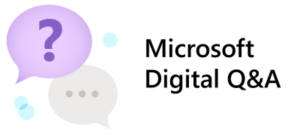This content has been archived, and while it was correct at time of publication, it may no longer be accurate or reflect the current situation at Microsoft.
 Hybrid work requires a change in mindset, culture, and technology, creating challenges and opportunities as Microsoft empowers employee productivity from anywhere.
Hybrid work requires a change in mindset, culture, and technology, creating challenges and opportunities as Microsoft empowers employee productivity from anywhere.
When it comes to embracing hybrid work at Microsoft, employees want options. In this video, Microsoft Chief Digital Officer Andrew Wilson and Microsoft CVP of Employee Experience Nathalie D’Hers share how Microsoft is giving its 180,000-plus employees the flexibility and connection they want.
“We were able to keep people productive from day one because we had moved most of our key workload to the cloud in a Zero Trust security model,” D’Hers says. “Our cloud-first approach is going to continue to be critical in hybrid work because we want to make sure that people are productive and secure from wherever they’re working.”
Note: You may need to log in to LinkedIn to view the video below.
You’ll also hear them share tips on how you can get the most out of working in a hybrid environment at your company, which requires alignment across the physical space, digital capabilities, and cultural norms.
One of D’Hers’ big pieces of advice to leaders for powering employee productivity?
“Accelerate your move to the cloud,” D’Hers says. “While it initially might seem like a daunting task, the long-term impact from an employee experience standpoint and cost-savings perspective are well worth it.”
Wilson also advocates for a learn-it-all mindset, something that Microsoft CEO Satya Nadella has also discussed. Microsoft Teams and Microsoft Viva are great tools to do that.
“One size doesn’t fit all, and we don’t have all the answers,” Wilson says. “We’re going to evolve together.”

- Make investments to transform your digital capabilities, cultural norms, and physical spaces and facilities.
- Enable everyone to be seen, heard, and fully participate from anywhere with Microsoft Teams Rooms.
- Use Azure Digital Twins and Internet of Things connected devices to power smart buildings at Microsoft and connect data from motion and occupancy sensors.
- Leverage a Zero Trust security model to ensure you have a healthy and protected environment that reinforces strong identity, device health enforcement, and least privilege access.









